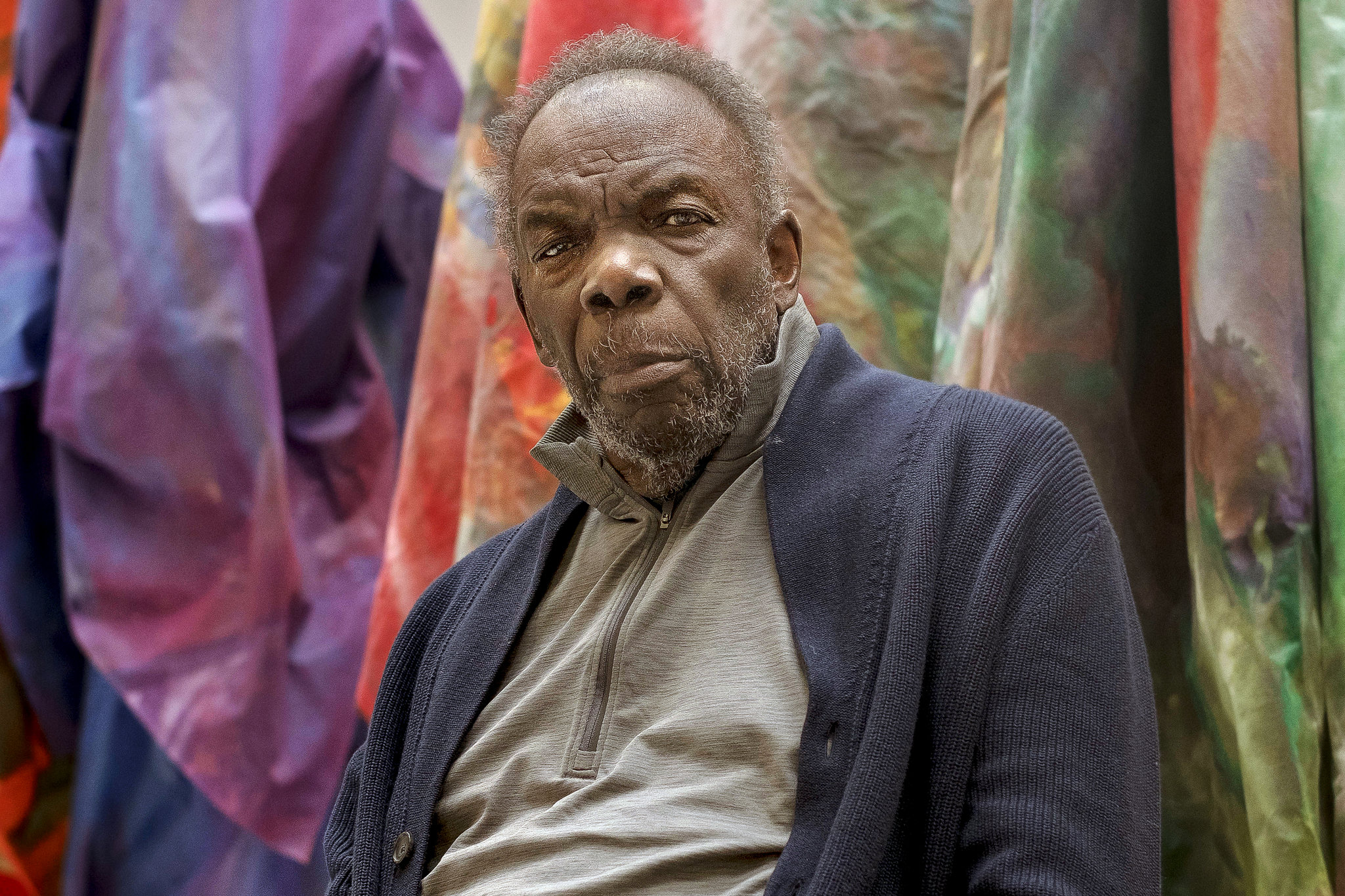Sam Gilliam is an African American colour field painter and lyrical abstractionist artist. Gilliam is associated with the Washington Colour School, a group of Washington DC. area artists that developed a form of abstract art from colour field painting in the 1950s and 1960s. His works have also been described as belonging to abstract expressionism and lyrical abstraction. He works on stretched, draped and wrapped canvas, and adds sculptural 3D elements. He is recognized as the first artist to introduce the idea of a draped, painted canvas hanging without stretcher bars around 1965. This was a major contribution to the Colour Field School.
In his more recent work, Gilliam has worked with polypropylene, computer generated imaging, metallic and iridescent acrylics, handmade paper, aluminium steel, plywood, and plastic.
1933
African American
In the 1960s as the political and social front of America began to explode in all directions, Gilliam began to take bold declarative initiatives, making definitive imagery inspired by the specific conditions of the African American experience. This was at a time that abstract art was said by some to be irrelevant to black African life. Abstraction remained a critical issue for artists such as Gilliam. His early style developed from brooding figural abstractions into large paintings of flatly applied colour, pushing Gilliam to eventually remove the easel by eliminating the stretcher. During this time period, Gilliam painted large colour stained canvases, which he draped and suspended from the walls and ceilings, comprising some of his best known artwork.
In 1971 he boycotted an event at the Whitney Museum in New York, in support of and in solidarity with the Black Emergency Cultural Coalition. This was in protest against the museum for failing to consult with Black art experts in selecting art for the show.
In 1972 Gilliam represented the US at the Venice Biennale, the first African American artist to do so. In 2017 he exhibited at the Venice Biennale once again, in the Giardini’s central pavilion.
Gilliam was influenced by German Expressionists such as Emil Nolde, Paul Klee, and the American Bay Area Figurative School artist Nathan Oliveira. Early influences included Morris Louis and Kenneth Noland. He says that he found many clues about how to go about his work from Tatlin, Frank Stella, Hans Hofmann, Georges Braque, Pablo Picasso, and Paul Cézanne. In 1963 he was introduced to the Washington Colour School by Thomas Downing, an artist who identified with the movement. Around 1965 Gilliam became the first painter to introduce the idea of the unsupported canvas. He was inspired to do this by observing laundry hanging outside his Washington studio. His drape paintings were suspended from ceilings or arranged on walls or floors, representing a sculptural third dimension in painting. Gilliam says that his paintings are based on the fact that the framework of the painting is in real space. He is attracted to its power and the way it functions. Gilliam’s draped canvases change in each environment where they are arranged and frequently he embellishes the works with metal, rocks, and wooden beams. He received countless public and private commissions for these draped canvases which earned him the title of the `father of the draped canvas’. One of his last, and largest, works within this series was titled Seahorses, and was made in 1975 for Philadelphia Museum of Art. The work consisted of six parts and was made of hundreds of feet of canvas.
Sam Gilliam was born in Tupelo, Mississippi, the seventh of eight children born to Sam and Estery Gilliam. The Gilliams moved to Louisville, Kentucky shortly after he was born. His father worked on the railroad; his mother cared for the large family. At a young age Gilliam wanted to be a cartoonist and spent most of his time drawing. In 1951 Gilliam graduated from Central High School in Louisville.
After high school, Gilliam attended the University of Louisville[1]and received his BA degree in Fine Arts in 1955 as a member of the second admitted class of Black undergraduate students.[8]In the same year he held his first solo art exhibition at the University. From 1956 to 1958 Gilliam served in the United States Army. He returned to the University of Louisville in 1961 and as a student of Charles Crodel, received his MA degree in painting. While attending college he befriended painter Kenneth Victor Young.
Gilliam listened to his college professor’s advice to become a high school teacher and was able to teach art at Washington’s McKinley High School. Gilliam devoted on developing his painting during his weekdays reserved for the classroom. In 1962, Gilliam moved to Washington DC after marrying Washington Post reporter Dorothy Butler, who was also the first African American female reporter at the Washington Post.
Gilliam currently lives in WashingtonDC. with his long term partner Annie Gawlak.
https://www.mnuchingallery.com/artists/sam-gilliam
Almost Famous: The Ebb and Flow of Sam Gilliam’s Formidable Practice
https://www.pacegallery.com/artists/sam-gilliam/
https://www.tate.org.uk/art/artists/sam-gilliam-1170
https://www.davidkordanskygallery.com/artist/sam-gilliam
https://en.wikipedia.org/wiki/Sam_Gilliam
At Age 84, Living Legend Sam Gilliam Is Enjoying His Greatest Renaissance Yet
https://www.artnews.com/art-news/retrospective/archives-interview-sam-gilliam-1973-10735/
https://www.google.com/search?q=sam+gilliam&source=lnms&tbm=isch&sa=X&sqi=2&ved=2ahUKEwjW3ajoqZj3AhV6mXIEHcUIAwgQ_AUoAXoECAIQAw&biw=1280&bih=577&dpr=1.5#imgrc=dJmyVjw431IkpM



